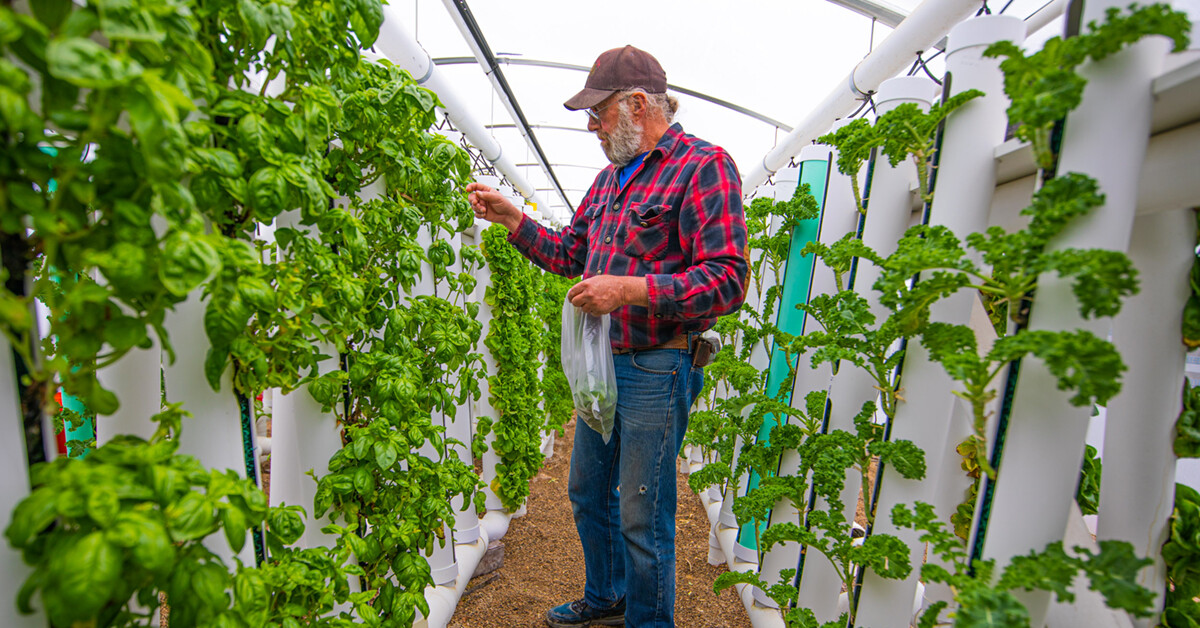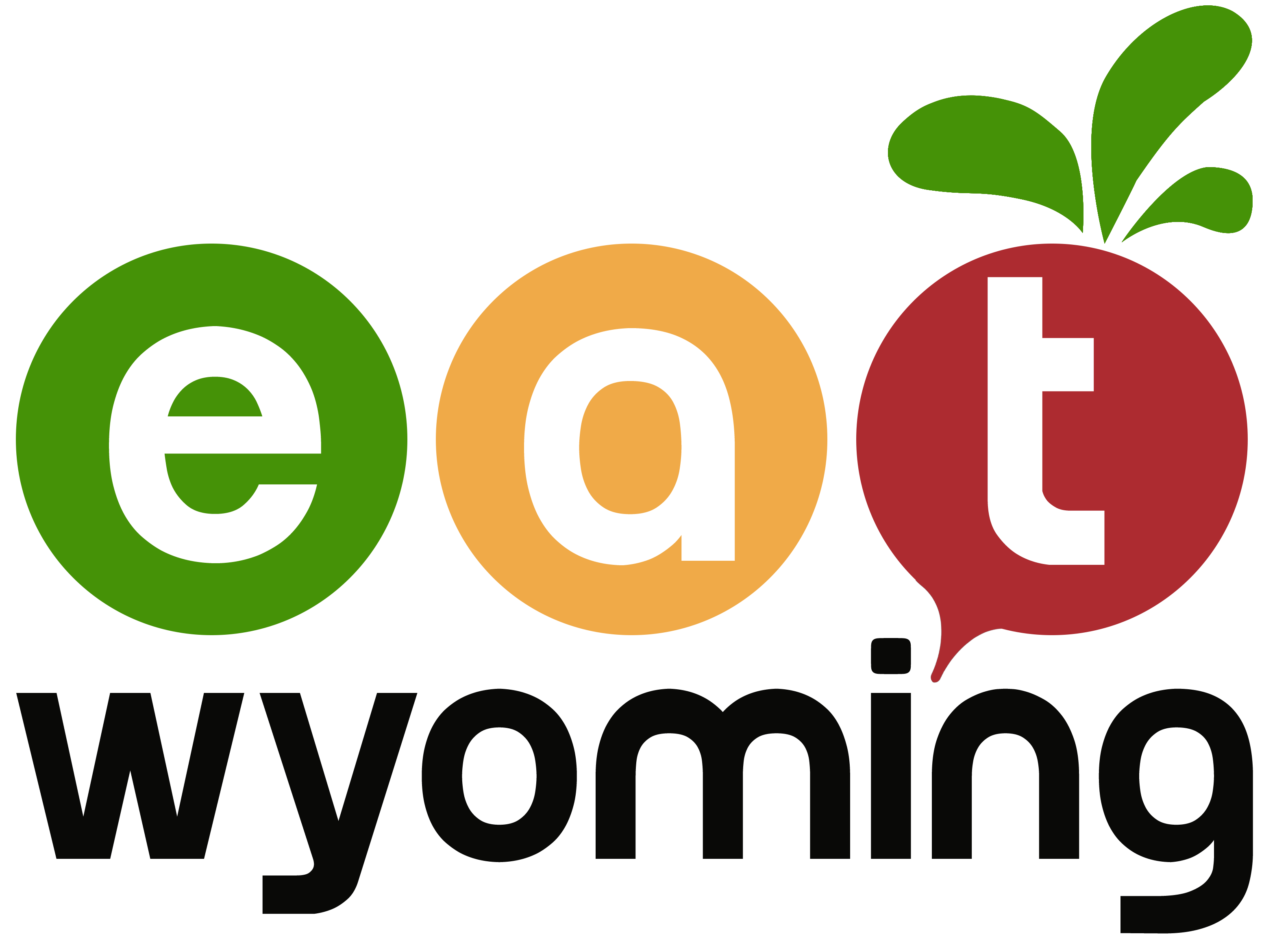
Food producers and retailers across Wyoming want locally grown food year-round, but it’s a cyclical challenge. Producers don’t want to make the investment of greenhouses and season extenders without guaranteed demand for product, and retailers can’t rely on locally grown food if they’re not sure of supply. But the good news for producers, retailers and consumers is that the proof of concept, both in terms of quality of food and in consumer demand, is already there. Everyone just needs to get on the same page to figure out how to make year-round food happen. And this is happening. A group of committed partners including the Wyoming Food Coalition, Eat Wyoming, producers and retailers are finally all working together to solve this chicken and egg problem – even if Wyoming isn’t necessarily known as a poultry state.
Wyoming’s interest in locally grown foods is growing
Joe Wesnitzer, the namesake of Papa Joe’s Produce in Sheridan, has seen interest in locally grown food explode over the last six years. When Wesnizter first began farming, it was a passion project supplemented by his full-time job. He loved growing, and he wanted to give his community the option of healthier and tastier locally grown foods. He started selling his lettuce and herbs at local farmers market throughout the summer months, but he quickly realized demand was much bigger than a part-time hobby. Local retailers were interested in carrying his product, and restaurants wanted to use Papa Joe’s Produce in their dishes. But to fulfill these contracts, he couldn’t just grow by himself June through September. Three greenhouses, two high tunnels, two employees and tens of thousands of pounds of lettuce later, Wesnitzer is just getting started.
“As each community gets to know their local producers, demand only grows. The local food movement has been dramatic here in Sheridan, and I’m confident that if there were something like this in every town, we could keep trucks off the road, healthier foods in our communities and our economy would grow,” Wesnitzer said. Though his greenhouses were initially a steep out-of-pocket investment, they’ve become financially sustainable. A “retired” farmer, Wesnitzer doesn’t prioritize sales, but due to the increase in demand for locally grown products, he continues to organically acquire new customers and contracts.
Contract and other large-scale opportunities for bulk sales exist and are expanding
Wyoming Food Coalition President Adam Bunker believes this trend will continue upward, so his organization, along with a network of producers, restauranteurs, wholesalers, retailers and other agencies, are working to guarantee it. All of these groups need each other, but up until now, they’ve largely been siloed, which has been at the detriment of everyone on the supply chain: producers, retailers down to your Wyoming neighbor consumers.
“What we need to do is approach these topics from positions of collaborations,” Bunker said. This December, the Vibrant Farmers and Infrastructure working group of the Wyoming Food Coalition is organizing a first-of-its-kind Wyoming food buyers and sellers conference, which will bring farmers together with major wholesalers like restauranteurs, retail grocers and even school districts. This conference has been in the works for years, but by finally bringing everyone to the same (well-stocked) table, producers can learn what kind of demand exists and retailers can learn how robust the supply is.
Demand for locally grown food has always existed, but quantity has always been the major challenge, Bunker says. School districts want to serve healthier produce to their students, but that contract requires massive volume. Similarly, restaurants and retail grocers want to be part of the locally grown foods craze, but they’ve been hesitant about reliability in the same ways that growers have been hesitant about investing in off-season growing equipment. “The opportunities are there, and one of our main initiatives is empowering everyone to be able to work together,” he said.
In addition to the upcoming conference, the Wyoming Food Coalition, Eat Wyoming and other agencies are educating stakeholders on the benefits of locally grown foods for Wyoming’s health – both nutritionally and our bottom line. For restaurants, simply comparing the price of local and national retailers is only a small part of the story, because freshness pays dividends. Locally grown produce may appear to have a higher price tag, but it’s typically harvested within just 24 hours of delivery, as opposed to days or even weeks prior like national suppliers, so restaurants are forced to throw out produce that has gone bad. Eliminating waste and serving better food pays for itself. On the retail end, smaller grocers are excited to make shelf space for locally grown foods, and even national retailers are becoming more of a possibility with Fresh Foods Wyoming currently in talks with Whole Foods in Jackson.
Opportunities for locally grown food doesn’t stop at restaurant menus or on grocery store shelves. Legislators are seeing economic potential for farming as our state finds new ways to supplement revenue. Food will be a valuable way to keep money in Wyoming, and we don’t even need to diversify our portfolio to achieve this; legislators are learning they just need to support existing growers who are already here and working.
Resources are available to prepare your business
Of course, for restaurants, grocers and legislators to rely on locally grown foods, it has to be available year-round, so greenhouses and season extenders will be critical, which can put producers under pressure. The best way to know if your business is ready to make that kind of investment is to understand the minutiae of your finances, he says. “Producers, take time to know your numbers. I know that can be scary. But when you take time to learn that, it takes all of the uncertainty out of doing business, so you can adjust your wholesale and retail prices. Knowing those numbers is critical to making the business side of growing work,” he said.
For help understanding these numbers, Bunker recommends reaching out to the Wyoming Small Business Development Center. It’s a free resource to anyone in Wyoming, and their financial models will help growers understand their fixed costs, sales volume and pricing structure, all of which are crucial information to become a profitable business. It can also help put a big investment like a greenhouse into context, including feasibility and the time it would take for that investment to pay off. Additionally, the SBDC helps with other business requirements, like registering as an LLC, tax planning, marketing and other resources that can make a business as viable as Wyoming-grown produce.
Big things are coming for Wyoming-grown food
Northern Wyoming has a 100-day growing season, Papa Joe Wesnitzer estimates, but the most basic a season extender gives him 40-60 extra days on both sides. It can double his season. Most extenders require little to no maintenance, and some covers last up to ten years. Wesnitzer encourages growers to begin with high tops and other season extenders to see how these additional days can turn into more dollars for your bottom line. The demand is already there, and it’s becoming even bigger with contracts soon to follow. Wyoming needs our best producers, like you, to be part of it. Think of how it can all grow.
